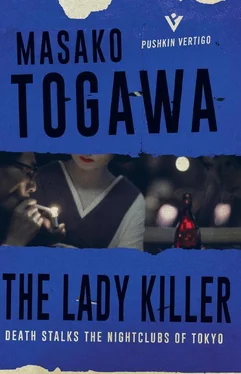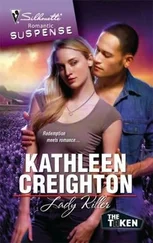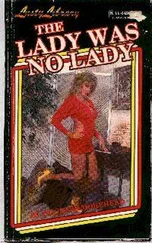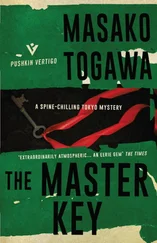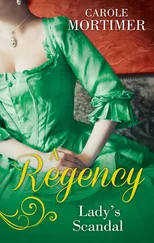In the evenings he hardly ever went out anymore. He killed time lying on his bed in his room, waiting for things to blow over. But when he slept, he had nightmares; he dreamed that he was being crushed by heavy weights and woke up shouting and in a cold sweat.
He followed the progress of the investigation as well as he could by buying all the papers and listening to the radio whenever he got the chance. The newspapers reported that the same criminal had been responsible for all of the murders. On about the twenty-third he watched a TV program featuring the officer in charge of the case, a man with thinning hair and a distrustful look in his eyes. Little did he think that within a few days he would be facing this man across the interrogation table. The policeman said that the criminal had left a vital clue on the scene and that his arrest was only a matter of time. Maybe not tomorrow, but the day after, or else the day after that. Tomorrow never comes, thought Honda scornfully.
However, the day came when he was awakened by knocking at his bedroom door and opened it to admit three men, one of them holding a warrant for his arrest. They seized him and handcuffed him like an animal and bundled him into a car.
Seated in the car as it sped toward police headquarters, a policeman on either side gripping him tightly by the arms, he looked back with nostalgia to the morning of the fifth of November when he had been awakened by somebody in slippers walking down the corridor outside. That was the day of the first murder, when his luck had begun to run out. What had become of the beautiful freedom that he had once so enjoyed?
The policemen on either side of him reeked of tinned salmon or of bean-paste soup with spring onions. These homely smells bespoke domestic peace and quiet.
The examination at the police headquarters went on for twenty days, and all he could do was deny that he was guilty. He began to wonder if he was going mad. They refused to allow him to see anyone, even a lawyer. The line that the police took was not the customary one of urging him to confess. Instead, they thrust more and more irrefutable evidence before him and asked him how he could possibly deny his guilt. It was like a psychological torture for him; his only alibis were worthless, or rather uncallable.
They asked him where he had left his Italian shoes, and when he said that they had vanished from the shoe box by the entrance, they laughed and told him that they had turned up wrapped in newspaper in Mitsuko Kosugi’s closet, and that the only fingerprints on them were his—and hers.
They produced the herringbone jacket, which they had recovered from his father’s house. Out of the pockets came the maroon tie—and a nylon stocking and a key. He remembered the tie, but was not conscious of having had the stocking used in the murder of Fusako Aikawa or Mitsuko Kosugi’s room key.
He began to think that perhaps, after all, he was guilty, that he had committed the murders without being conscious of it.
Furthermore, they told him, although he claimed only to have been in the rooms of the two murdered women for a very short time, they had found semen of his blood group in the bodies of the women. This was evidence suggesting that he had spent at least long enough there to have had sexual intercourse with his victims.
A rare blood group, and one that was found in a bloodstain at one of the scenes of his crimes: AB Rh-negative. Only one person in two thousand had it—and he was one of them. He was at a loss for words.
And so he relapsed into silence, saying nothing no matter what they showed him or told him. After he was committed for trial, he sat staring blankly at the prison walls, asking himself again and again, “Who did it? Who did it?”
But then he ceased to ask himself this question, because in his heart of hearts he knew that there was no way to find out the answer to it.
Ichiro Honda, engineer, aged 29, sentenced to death on June 30 at Tokyo District court on charges of sex-related murders. The defendant denied the charges.
On a charge of murdering Kimiko Tsuda on November the 5th, he was found not guilty on grounds of insufficient evidence.
On a charge of murdering Fusako Aikawa on December the 19th, and on another charge of murdering Mitsuko Kosugi on January the 15th, he was found guilty.
There were no extenuating circumstances in either case.
The verdict was handed down a hundred and fifty-six days after the arrest of the accused at the Toyo Hotel.
The defendant immediately filed notice of appeal to the Tokyo court of appeals, claiming that the verdict was wrong.
Important items of evidence upon which expert witnesses testified:
A pair of low-heeled gentleman’s shoes of Italian manufacture, left by the defendant in Mitsuko Kosugi’s room.
A maroon-colored tie, the size of which corresponded exactly with the strangulation marks on Mitsuko Kosugi’s neck.
A woman’s brown stocking, which, it was testified, was of a size corresponding to the strangulation marks on the neck of Fusako Aikawa.
Transcript of evidence given on the third day of the trial.
Examination of expert medical witness by the Public Prosecutor:
Question . Was there any evidence to suggest that the victim, Mitsuko Kosugi, struggled with her assailant?
Answer . The only evidence was the presence of blood under all her fingernails, except her two thumbs and the little finger of her right hand. The blood was deeply engrained under her nails.
Question . Of what type was this blood?
Answer . Type AB, Rh-negative.
Question . Of what type was the victim’s blood?
Answer . Type O.
Question . Then you would agree that the blood found under the victim’s nails could not have been her own?
Answer . Yes, I agree.
Questions put by the judge to the defendant:
Question . What is your blood type?
Answer . Type AB, Rh-negative.
Question . When did you learn this was your type?
Answer . When I entered Asia Moral University and my blood was tested by the Institute of Biology there.
Question put by the judge to the arresting police officer:
Question . When you examined the defendant after taking him into custody, did you find any scars or other indication of recent injury?
Answer . I had no warrant to carry out a physical examination, so I could not carry out a full check. However, I noticed that there were small scabs on both his left cheek and the back of his right hand.
Summation of points arising from the foregoing evidence made by the judge:
1. Whether or not there were any wounds on the defendant’s body, which appear to have been made on about January 15th.
There were such wounds.
2. The blood type of the defendant.
Type AB Rh-negative.
3. The blood type evinced in the defendant’s semen.
Secretion type of type AB.
Evidence presented by the prosecution was based upon thirty-five man-days of research. Amongst the witnesses called were:
A hotel receptionist.
Gave evidence that on the day of one of the crimes, Ichiro Honda returned to the hotel in the early morning.
A policeman employed on foot patrol.
Testified that he passed Ichiro Honda in the vicinity of Fusako Aikawa’s apartment early in the morning on the night of the murder.
Two taxi drivers.
Each swore that on the night of a murder they had picked up Ichiro Honda in the small hours and carried him to the vicinity of Yotsuya Sanchome.
The manager of the Meikei-so.
Testified that Ichiro Honda had been his tenant.
Friends of Fusako Aikawa and Mitsuko Kosugi.
Читать дальше
